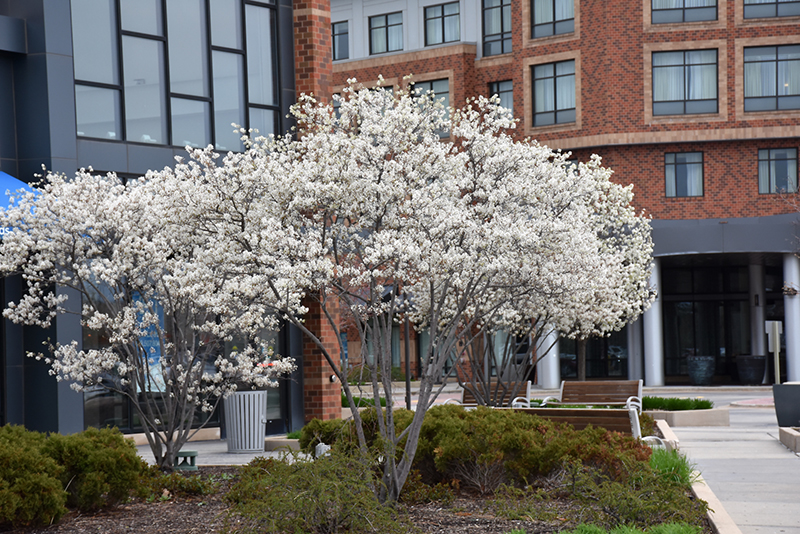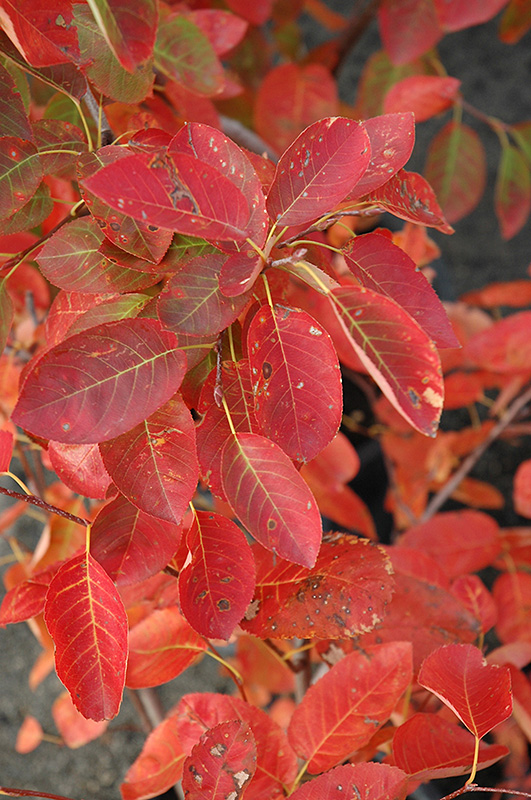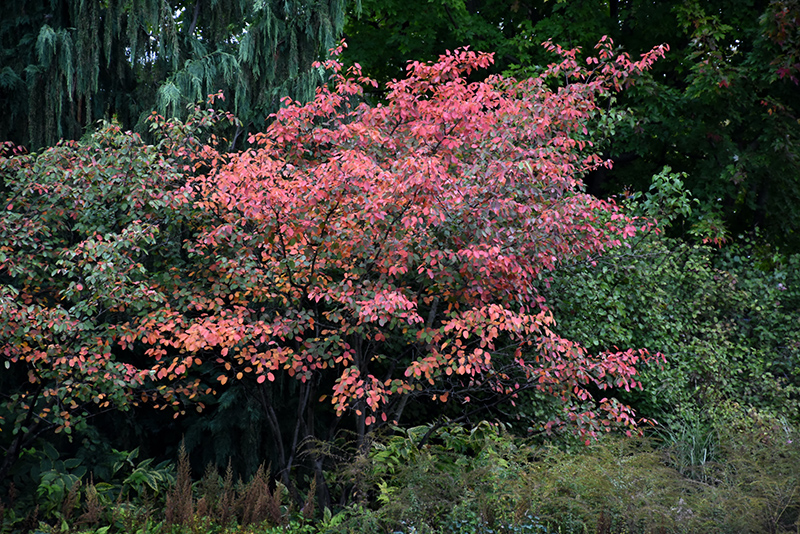Serviceberry, Autumn Brilliance Amelanchier x grandiflora 'Autumn Brilliance' Height: 25 feet Spread: 15 feet
Sunlight:
Hardiness Zone: 3b Description: A great small tree prized for its abundance of showy white flowers in spring and consistently beautiful fall colors; a great three-season shade tree for small landscapes Ornamental Features Serviceberry, Autumn Brilliance is covered in stunning clusters of white flowers rising above the foliage in early spring before the leaves. It has dark green deciduous foliage. The oval leaves turn an outstanding brick red in the fall. It produces blue berries from late spring to early summer. The smooth gray bark adds an interesting dimension to the landscape. Landscape Attributes Serviceberry, Autumn Brilliance is an open multi-stemmed deciduous tree with a more or less rounded form. Its relatively fine texture sets it apart from other landscape plants with less refined foliage. This is a relatively low maintenance tree, and is best pruned in late winter once the threat of extreme cold has passed. It is a good choice for attracting birds to your yard, but is not particularly attractive to deer who tend to leave it alone in favor of tastier treats. It has no significant negative characteristics. Serviceberry, Autumn Brilliance is recommended for the following landscape applications; Planting & Growing Serviceberry, Autumn Brilliance will grow to be about 25 feet tall at maturity, with a spread of 15 feet. It has a high canopy with a typical clearance of 6 feet from the ground, and is suitable for planting under power lines. As it matures, the lower branches of this tree can be strategically removed to create a high enough canopy to support unobstructed human traffic underneath. It grows at a medium rate, and under ideal conditions can be expected to live for 40 years or more. This tree does best in full sun to partial shade. It prefers to grow in average to moist conditions, and shouldn't be allowed to dry out. To help this plant achive its best flowering performance, periodically apply a flower-boosting fertilizer from early spring through into the active growing season. It is not particular as to soil type or pH. It is somewhat tolerant of urban pollution. This particular variety is an interspecific hybrid. Special Attribute Small berries (the size of blueberries) ripen in June. Generally the birds eat them at the peak or ripeness, but can be eaten fresh or used for jams & jelly.![]()
![]()
![]()
![]()
![]()
![]()
![]()
![]()
![]()
![]()
![]()
![]()
![]()
![]()
![]()



